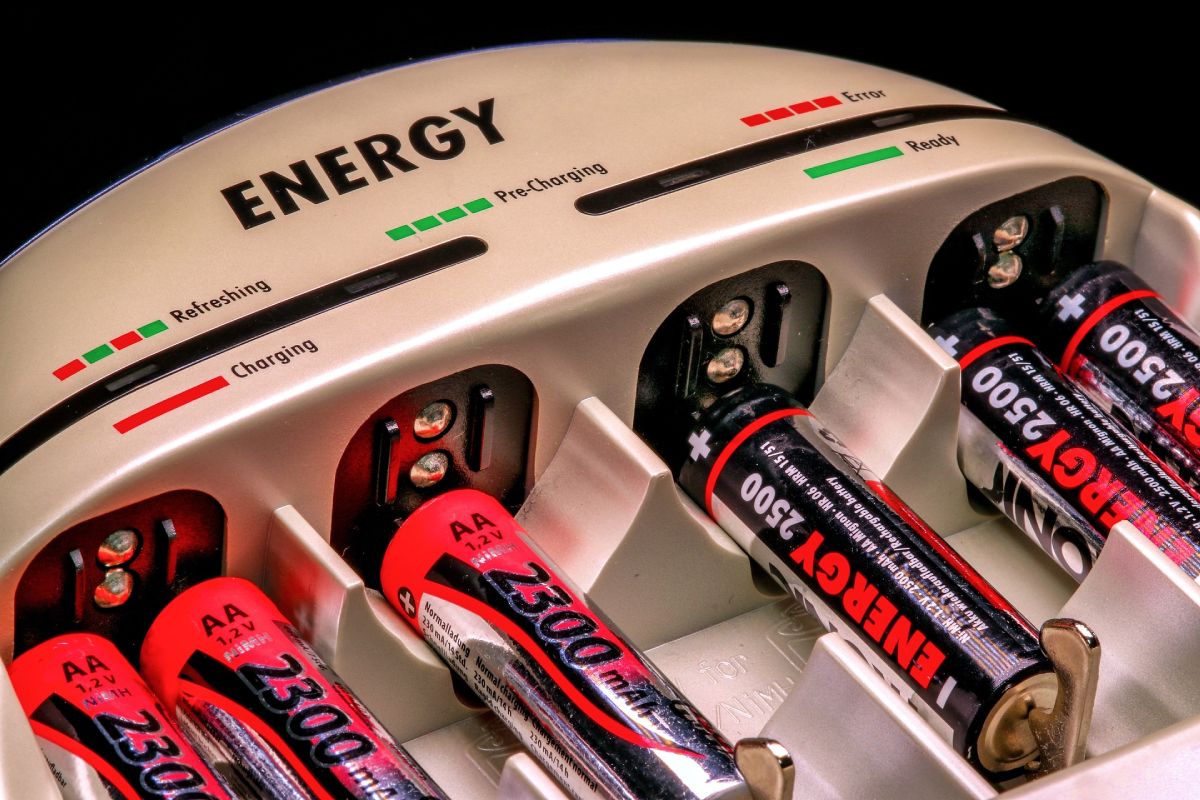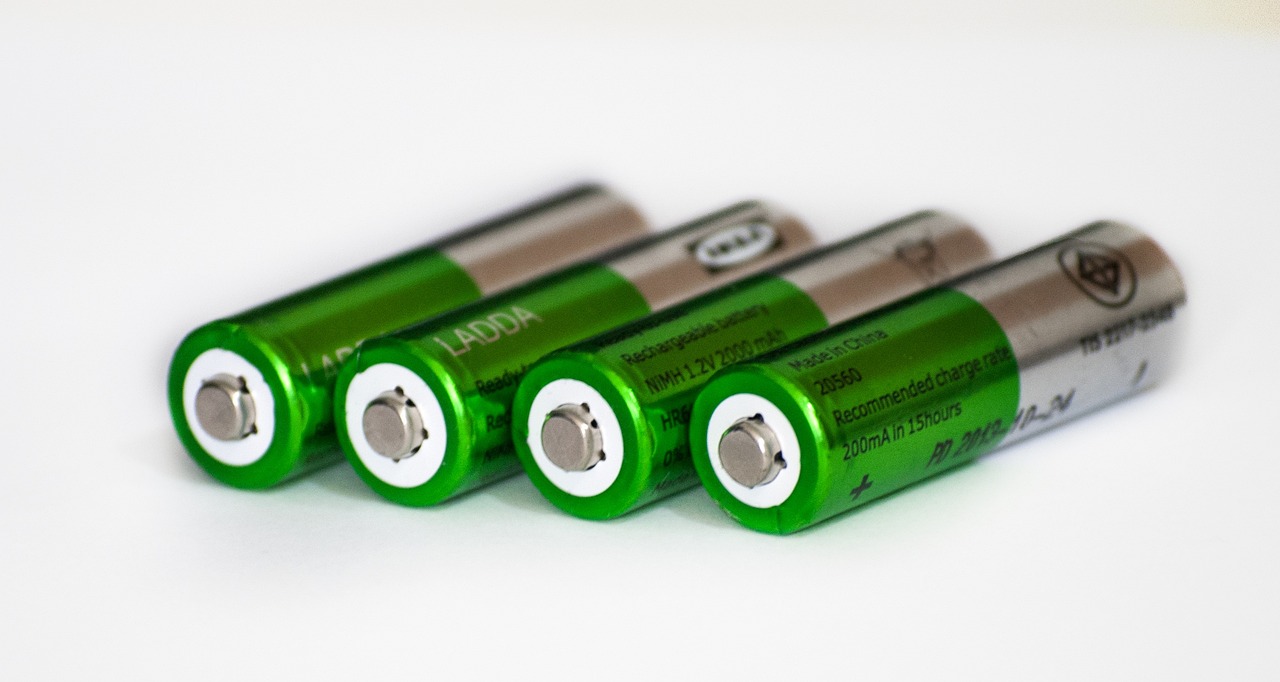Introduction
Batteries, whether in our smartphones, laptops, or household gadgets, are the unsung heroes of our modern lifestyle. They power our digital lives, from the alarm that wakes us up in the morning to the devices we use for work and entertainment. But, as essential as they are, batteries also pose a significant environmental challenge.
The Importance of Batteries in Daily Life
We are surrounded by batteries in our daily lives. They are in our phones, our cars, our laptops, our watches, and countless other devices that we rely on every day. They give us mobility and convenience, freeing us from the tether of a power cord and allowing us to use our devices wherever we please. The impact of batteries on our modern lifestyle cannot be overstated, and yet their environmental impact is often overlooked.
Rechargeable vs. Single-use Batteries
When it comes to batteries, we have a choice: single-use batteries, which are used once and then disposed of, or rechargeable batteries, which can be used over and over again. While single-use batteries may seem convenient, they contribute to the growing problem of electronic waste, which is difficult to recycle and can leach harmful substances into the environment.
On the other hand, rechargeable batteries, while requiring more energy and resources to produce, can be reused hundreds or even thousands of times before they need to be recycled, making them a more sustainable choice in the long run.
Overview of the Article
In this article, we will explore the benefits of rechargeable batteries, how they work, and why they are a crucial component of a more sustainable future. We’ll delve into the different types of rechargeable batteries available, and guide you on how to use and dispose of them responsibly. Whether you’re an eco-conscious consumer or just curious about technology, we invite you to join us on this journey to understand the small but powerful ways we can contribute to a more sustainable world through our battery choices.
The Problem with Single-use Batteries
Single-use batteries, also known as primary batteries, have a significant environmental impact. Despite being a small part of our daily lives, the cumulative effect of their production, use, and disposal can cause severe damage.

Environmental Impact of Single-use Batteries
The production of single-use batteries involves the extraction and processing of raw materials, such as zinc, manganese, and lithium. This extraction process can lead to habitat destruction, water pollution, and greenhouse gas emissions. Once produced, the transportation of these batteries also contributes to carbon emissions.
When disposed of improperly, single-use batteries can leach heavy metals and corrosive chemicals into the environment. This can pollute our soil and water systems, harming wildlife and even making its way into our food chain.
Waste Statistics Related to Single-use Batteries
According to the Environmental Protection Agency, Americans dispose of more than three billion batteries every year, the majority of which are single-use. Globally, tens of billions of single-use batteries end up in landfills annually. Despite recycling programs, less than half of used batteries are properly disposed of, making them a significant contributor to electronic waste.
Health Risks
The chemicals found in batteries, such as lead, mercury, cadmium, and lithium, pose serious health risks if they enter the environment. For example, lead can cause neurological damage, especially in children, while mercury can damage the kidneys and nervous system.
When batteries end up in landfills, these chemicals can leach out and contaminate the surrounding soil and water. This can potentially enter our food and water supplies, posing a risk to human health.
In summary, while single-use batteries may offer convenience, their environmental and health impacts are significant. As consumers, we need to be aware of these impacts and consider more sustainable alternatives, such as rechargeable batteries, which we’ll explore in the next section.
Understanding Rechargeable Batteries
Rechargeable batteries present a viable alternative to single-use batteries, offering a way to power our devices while lessening our impact on the environment.

What are Rechargeable Batteries
Rechargeable batteries, also known as secondary batteries, are a type of electrical battery that can be charged, discharged, and reused multiple times. This contrasts with single-use batteries, which can only be used once and must be disposed of after they’re depleted.
Different Types of Rechargeable Batteries
Rechargeable batteries come in several different types, each with its own benefits and drawbacks. Some of the most common types include:
Nickel-Cadmium (NiCd): These batteries were among the first rechargeable batteries. They’re known for their durability and ability to deliver high currents. However, they contain cadmium, a toxic heavy metal.
Nickel-Metal Hydride (NiMH): NiMH batteries are a more environmentally friendly alternative to NiCd batteries. They offer higher capacity and don’t contain heavy metals, but they can suffer from ‘memory effect’ if not fully discharged before recharging.
Lithium-ion (Li-ion): Lithium-ion batteries are currently the most commonly used rechargeable batteries. They provide high energy density and long life spans, but they can be volatile and require careful handling.
Lithium Iron Phosphate (LiFePO4): These batteries are safer than standard Li-ion batteries and have a longer lifespan, but they have a lower energy density.
How Rechargeable Batteries Work
Rechargeable batteries operate on the principle of reversible electrochemical reactions. When the battery is being used (discharge phase), it generates an electric current through a chemical reaction. This reaction transforms chemical energy into electrical energy.
When the battery is connected to a charger (charge phase), an external power supply applies an electric current to reverse the chemical reaction, restoring the battery’s charge. This process can be repeated many times, hence the term “ rechargeable.”
In summary, rechargeable batteries can offer a more sustainable way to power our devices by reducing the number of batteries we need to dispose of. In the next section, we’ll look more closely at the benefits of using rechargeable batteries.
Environmental Benefits of Rechargeable Batteries
Switching to rechargeable batteries isn’t just a smart financial move; it can also have a significant impact on the environment. By reducing waste, conserving energy, and curbing resource extraction, rechargeable batteries offer several environmental benefits.

Reduced Waste Generation
Single-use batteries generate a considerable amount of waste. Once they’re depleted, they’re typically thrown away, ending up in landfills. In contrast, rechargeable batteries can be used hundreds, or even thousands, of times before they lose their effectiveness. This results in significantly less waste. For instance, replacing 500 single-use batteries with a single rechargeable battery can significantly reduce the amount of battery waste entering the environment.
Lower Energy Consumption
It’s not just about the waste generated once batteries are used up; it’s also about the energy used to produce them. Manufacturing new batteries takes a substantial amount of energy, much of which comes from burning fossil fuels. Rechargeable batteries require more energy to produce than single-use batteries, but over their lifetime, they’re more energy-efficient. This is because the energy required to recharge a battery is far less than the energy required to manufacture a new one.
Decreased Resource Extraction
Finally, there’s the issue of resource extraction. Batteries are made from various metals and minerals, many of which are finite resources. Extraction of these materials can have severe environmental impacts, including habitat destruction and water pollution. As rechargeable batteries can be reused many times, they require fewer resources over their lifetime compared to single-use batteries.
In summary, rechargeable batteries contribute to sustainability by generating less waste, using less energy, and reducing the demand for resource extraction. In the next sections, we’ll look at how you can make the switch to rechargeable batteries and what to consider when doing so.
Economic Benefits of Rechargeable Batteries
While rechargeable batteries offer substantial environmental benefits, they also make economic sense. They may have a higher upfront cost than their single-use counterparts, but the long-term savings, return on investment (ROI), and current market trends make rechargeable batteries an economically attractive option.

Long-term Cost Savings
Despite the initial cost, rechargeable batteries save money in the long run. The fact that you can recharge and reuse them means that you don’t have to buy batteries as often. Depending on the frequency of use, a single rechargeable battery can replace hundreds or even thousands of single-use batteries over its lifetime.
ROI Analysis
When you consider the return on investment (ROI), rechargeable batteries are an excellent choice. To calculate the ROI, divide the amount saved over the battery’s lifetime by the initial cost of the battery and the charger. For frequent battery users, the savings over time can be substantial, making the ROI of rechargeable batteries significantly higher than single-use batteries.
Market Trends in Rechargeable Batteries
Market trends show a growing demand for rechargeable batteries. According to market research, the global rechargeable battery market size is expected to increase significantly in the coming years. This growth is driven by rising consumer awareness about the environmental and economic benefits of rechargeable batteries. Increased demand often leads to competitive pricing and innovative solutions, making rechargeable batteries an even more attractive option in the future.
In summary, while the initial cost of rechargeable batteries may be higher than single-use batteries, the long-term economic benefits are clear. They provide considerable cost savings over their lifespan and have a positive ROI, and increasing market demand points towards a more affordable and innovative future for rechargeable batteries. In the following section, we’ll discuss how to choose the right rechargeable batteries and how to take care of them to maximize their lifespan.
Practicality and Performance of Rechargeable Batteries
Rechargeable batteries are not only environmentally friendly and cost-effective, but they also offer superior practicality and performance for many applications. Let’s explore their use cases, compare their performance with single-use batteries, and understand their lifespan to gain a comprehensive view of their advantages.

Use Cases for Rechargeable Batteries
Rechargeable batteries find application in a variety of devices that we use daily. High-drain devices such as digital cameras, flashlights, and toys perform much better with rechargeable batteries because of their ability to deliver high power levels consistently. They are also ideal for everyday low-drain devices like remote controls, clocks, and wireless keyboards and mice, saving you from the hassle of frequent replacements.
Comparing Performance: Rechargeable vs. Single-use Batteries
In terms of performance, rechargeable batteries often outdo their single-use counterparts. Single-use batteries have a tendency to deliver power at a diminishing rate, whereas most rechargeable batteries provide a steady level of power for most of their charge. This consistent performance is particularly advantageous in high-drain devices. Plus, the capacity of rechargeable batteries to be recharged hundreds to thousands of times translates to less waste and more efficient use of resources.
Lifespan of Rechargeable Batteries
The lifespan of a rechargeable battery depends on its type, usage, and care. Generally, rechargeable batteries can be recharged hundreds or thousands of times before they lose their ability to hold a charge. With proper care, they can last anywhere from 2 to 7 years or more. However, they do have a finite lifespan and will eventually need to be replaced and responsibly recycled.
In summary, rechargeable batteries offer high practicality and performance across various use cases. They deliver consistent power, particularly for high-drain devices, and boast a lifespan that significantly reduces waste and promotes resource efficiency. In the next sections, we will explore how to properly use and care for rechargeable batteries to maximize their environmental and economic benefits.
Proper Disposal and Recycling of Batteries
Ensuring that batteries, both single-use and rechargeable, are disposed of responsibly is critical in mitigating the environmental risks they pose. Here, we’ll discuss why proper battery disposal is important and introduce you to various local and national recycling programs. We’ll also share some DIY tips for safe battery disposal.

Why Battery Disposal Matters
Improper disposal of batteries can lead to a plethora of environmental hazards. Batteries contain heavy metals like mercury, lead, cadmium, and nickel, which can leach into soil and groundwater when sent to a landfill. This not only contaminates our environment but can also pose significant health risks to humans and wildlife. Consequently, appropriate disposal and recycling are essential in reducing pollution and preserving natural resources.
Local and National Recycling Programs
Many local and national programs exist that encourage battery recycling. Large chain stores, electronic shops, and even some libraries offer drop-off points for used batteries. National recycling programs like Call2Recycle in the United States and BatteryBack in the United Kingdom provide convenient battery recycling services. They’ve established extensive networks of drop-off locations, making it easier for people to recycle their used batteries responsibly.
DIY Safe Disposal Tips
While taking advantage of these recycling programs is highly recommended, there are also ways to safely handle batteries at home before disposal. First, it’s important to store used batteries in a cool, dry place and to avoid damage. Place tape over the terminals of used batteries to prevent any residual charge from causing a short circuit. If you have small children, make sure the batteries are stored out of their reach.
In conclusion, proper disposal and recycling of batteries are indispensable steps towards a more sustainable future. Not only does it prevent the contamination of our environment, but it also aids in the conservation of precious resources. So next time when you’re replacing a battery, remember: don’t just throw it in the trash, recycle it responsibly.
In the upcoming sections, we will delve into the challenges faced by the rechargeable battery industry and how it plans to overcome them.
Overcoming Barriers to Adoption
While rechargeable batteries offer undeniable benefits, certain barriers can hinder their wide-scale adoption. In this section, we’ll explore some of these obstacles, such as initial cost concerns, availability issues, and misconceptions about rechargeable batteries. We’ll also discuss ways to overcome these barriers, facilitating the transition towards sustainable energy storage solutions.

Initial Cost Concerns
One of the most significant barriers to adopting rechargeable batteries is their higher initial cost compared to single-use batteries. Though rechargeable batteries prove to be more cost-effective in the long run, the upfront cost can deter potential users. To overcome this hurdle, education is key. Consumers need to be informed about the long-term cost savings and the environmental benefits of switching to rechargeable batteries. Moreover, government incentives or subsidies can also help reduce the initial costs and promote the adoption of rechargeable batteries.
Availability of Rechargeable Batteries
Availability is another concern. While single-use batteries can be found in almost every store, the same can’t be said for their rechargeable counterparts. Strengthening the supply chain and expanding the availability of rechargeable batteries in stores can address this issue. Also, manufacturers can partner with online marketplaces to improve accessibility and provide a convenient purchase experience for the consumers.
Dispelling Myths About Rechargeable Batteries
Misconceptions about rechargeable batteries also pose challenges. Some believe these batteries don’t last as long or perform as well as single-use batteries. However, technological advancements have significantly improved the efficiency, capacity, and life-span of rechargeable batteries, making them a viable, even superior, alternative. Correcting these misconceptions through consumer education can aid in driving the adoption of rechargeable batteries.
In conclusion, while there are certain obstacles to adopting rechargeable batteries, they are far from insurmountable. Through a combination of education, improved availability, and debunking of misconceptions, we can make the transition to rechargeable batteries smoother. Doing so will not only lead to cost savings over time but will also contribute significantly to the sustainability of our planet. Stay tuned for our final thoughts in the conclusion.
Impact of Small Changes towards Sustainability
The journey towards sustainability often begins with small, manageable steps. One such step is the switch from single-use to rechargeable batteries. This section highlights the pivotal role individuals can play in promoting sustainability, other simple changes that can make a big difference, and how these smaller initiatives contribute to our larger environmental goals.

Role of Individuals in Promoting Sustainability
Every individual has a unique and significant role in our collective sustainability efforts. By making conscious decisions, like using rechargeable batteries, we are not only reducing waste but also promoting energy efficiency and resource conservation. Each small action, when amplified by the collective actions of millions around the world, can lead to significant environmental improvements.
Other Simple Changes with Big Impact
The switch to rechargeable batteries is just one of many small changes that can have a big impact. Other examples include reducing water use, opting for public transport, recycling, and composting. These actions may seem minor, but their cumulative effect can be enormous. Implementing energy-saving measures at home, such as LED lights and energy-efficient appliances, also contributes significantly to sustainability.
Connection to Larger Environmental Goals
These seemingly small steps connect to our larger environmental goals in meaningful ways. Reducing waste and conserving resources are integral parts of addressing climate change and protecting our planet’s biodiversity. By embracing rechargeable batteries and other similar initiatives, we are moving closer to a circular economy – one where waste is minimized, and resources are kept in use for as long as possible.
In conclusion, every small change matters. The switch to rechargeable batteries and similar small steps signal a larger commitment to sustainability, climate action, and resource conservation. The role of individuals is indispensable in this journey. Our collective actions will pave the way for a sustainable future, demonstrating that even minor lifestyle adjustments can have profound impacts on the environment. Stay tuned for our concluding thoughts in the next section.
Conclusion
Our journey through the world of rechargeable batteries and their significance in the sustainability landscape is coming to an end. But the conversation about individual contributions to a sustainable future is just beginning. This conclusion will recap the benefits of rechargeable batteries, offer some final thoughts on sustainability, and encourage each of us to take that small but significant step towards a greener future.

Recap of Benefits of Rechargeable Batteries
Switching to rechargeable batteries brings numerous environmental, economic, and practical benefits. Environmentally, they significantly reduce waste, lower energy consumption, and decrease resource extraction. Economically, they offer long-term cost savings and a positive return on investment. From a practical standpoint, their performance competes well with single-use batteries, and they can be used in a wide range of devices, making them a viable choice for everyday use.
Final Thoughts on Sustainability
Sustainability is no longer a choice; it’s a necessity. We’re standing at a critical juncture where our actions today will determine the future health of our planet. It’s important to remember that sustainability is not an all-or-nothing endeavor. Every step we take, no matter how small, brings us closer to a sustainable world. The switch to rechargeable batteries is a perfect example of a small action that can lead to substantial change.
Encouragement to Take the Small Step
So, here is our encouragement to you – take the small step. Invest in a set of rechargeable batteries and a charger. Yes, it might seem like a minor change, but it’s these minor changes that collectively make a major difference. Be part of the solution. Reduce waste. Save energy. Contribute to a sustainable future.
In conclusion, rechargeable batteries represent more than just a technological advance; they symbolize a shift towards sustainability. They remind us that we have the power to make a difference, one battery, one charge at a time. So let’s embrace this opportunity, let’s take the small step, and let’s walk together towards a sustainable future.

